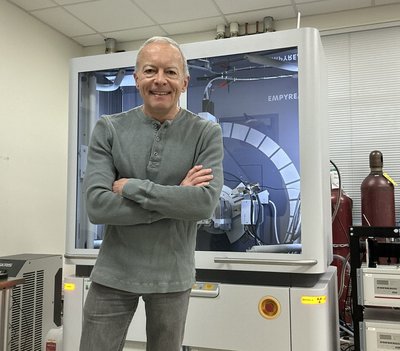According to Artūras Vailionis, a core lead of the X-ray and Surface Analysis group at Stanford University and a visiting professor at the Lithuanian Kaunas University of Technology (KTU), it has been (and still is) commonly believed that the self-discharge of a fully charged battery is due to the diffusion of lithium atoms from the electrolyte to the battery’s cathode.
"However, our study has shown that it is the diffusion of protons (hydrogen ions) that is causing a battery’s self-discharge. Based on the results of this study, it is possible to propose ways to extend the life of the battery by reducing self-discharge," says Vailionis.

These ways may include supplementing additives to the electrolyte that do not contain hydrogen molecules, such as CH2, or using a special coating to reduce the cathode surface’s reaction with the electrolyte.
Longer battery life for greener and more cost-effective technologies
Prof. Vailionis explains that self-discharge shortens both the calendar and cyclic life of the battery, and over time it causes a decrease in its voltage and capacity. The limited lifespan of a lithium battery has environmental and economic impacts; therefore, it is important to understand and prevent this issue.
The discovery of an entirely new phenomenon behind the self-discharge of the batteries might pave the way to greener, more cost-effective and more reliable technology.
"The longer lifetime of lithium-ion batteries means that consumers need to change their batteries or electronic devices less often. Also, longer battery life helps to reduce the amount of electronic waste and prevents resource depletion – lithium, cobalt, and nickel are finite resources – thus contributing to more sustainable practices," says Vailionis.
Devices with long-lasting batteries, such as smartphones, laptops and others, can be used for longer without the need to recharge them, and in industrial applications with large battery systems (e.g. electric vehicles or grid energy storage), longer battery life means a higher return on investment, making these technologies more economical. Besides, in renewable energy systems, such as solar and wind power, longer battery life increases the efficiency and reliability of energy storage, helps stabilise the energy supply and reduces dependence on fossil fuels.

As lithium-ion batteries are also used in medical devices, aerospace and defence systems, longer battery life reduces the risk of failure in critical situations.
"Overall, longer battery life improves sustainability, economy and productivity in a wide range of industrial applications," adds Vailionis.
The outcome of the large international group of scientists
Prof. Vailionis emphasises that the study results are the outcome of the work of a large international group of scientists from different fields. Vailionis’s team at Stanford University used X-ray diffraction to identify two different structures in the cathode: one at the surface (the one affected by hydrogen ions) and one deeper inside the cathode. X-ray reflectometry also confirmed the existence of a surface layer with hydrogen atoms.
Vailionis, a Stanford University scientist, has been a visiting professor at KTU, Lithuania for 13 years. Every year, he gives a course on X-ray diffraction to the students of the physics study programmes and takes part in common projects with KTU scientists.
"Since I left, Lithuania has changed beyond recognition: universities are getting much better funding for education, they have access to European funds. Scientists and PhD students have great opportunities to go to other universities and research institutions to study, to go to conferences and to share their research results,“ says Vailionis.
According to him, Lithuanian students have also changed: "They are much more active in the class than they were in my time, and there are no problems with the English language."
The study „Solvent-mediated oxide hydrogenation in layered cathodes“ was published in Science Journal and can be accessed here.
